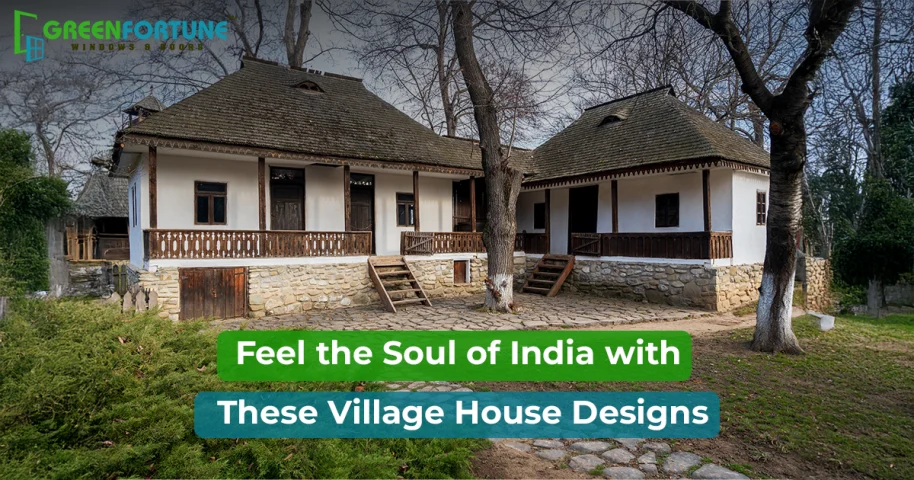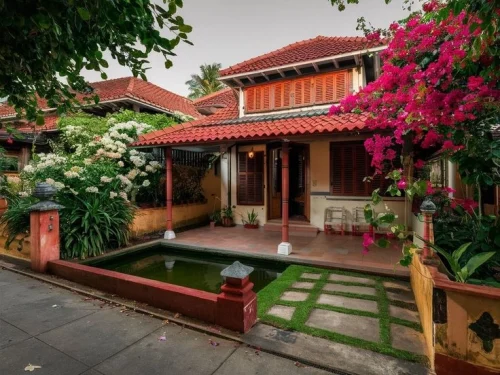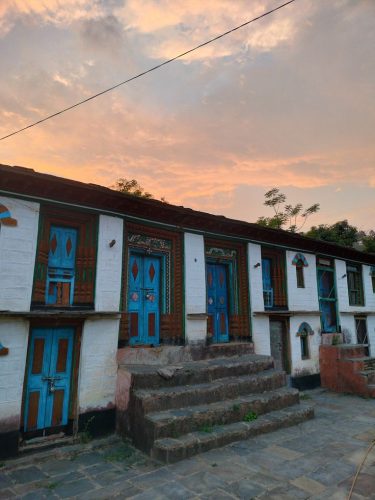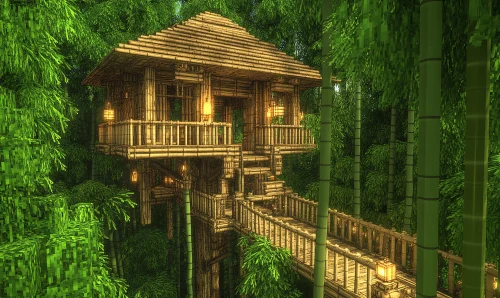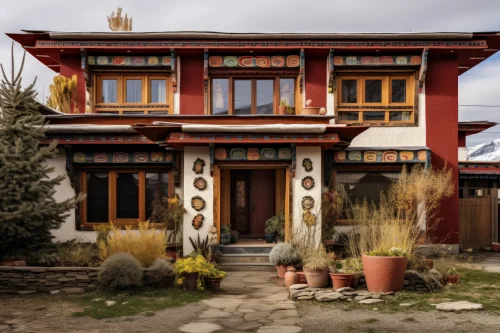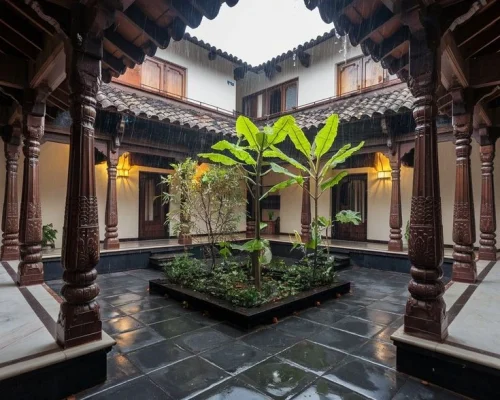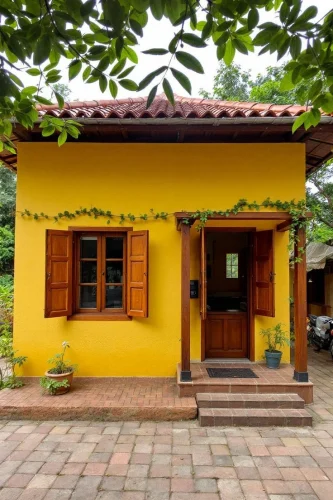
A Guide to 5BHK House Design: The Ultimate Urban Indian Dream
May 27, 2025
Kashmiri Home Interiors: Your Ultimate Guide to Home Design Kashmir Style
May 27, 2025In recent years, a growing number of people are moving to villages or recreating a village-style ambiance in their city homes. Rising pollution, poor air quality, traffic congestion, and overcrowding in urban areas are some of the reasons.
Village houses India have their unique charm. While they may not be as ultra-modern as city homes, they offer warmth, simplicity, and a deep sense of belonging.
So, whether you're planning to build your dream home in a rural area or want to bring the essence of traditional architecture to your city space, this blog is for you. We’ve curated a list of trending village house India designs in India that beautifully blend tradition with comfort.
1. Cottage-Style Village House
A cottage-style village house India is small, cozy, and beautiful, straight out of a fairy tale. These houses are made of all-natural materials like wood, stones, and mud and have sloping roofs and wooden doors. Cottage-style village houses also have a small porch and a garden full of flowers and plants.
The rooms are warm and simple, with soft colors, wooden furniture, and big windows for sunlight. This village-style house design is perfect for people who want a peaceful and charming home that feels close to nature.
2. Stone House Design
Stone house designs are very trendy and are common in hilly regions such as Himachal Pradesh and Uttarakhand. These houses are strong, long-lasting, and perfect for areas with rough weather. Stone houses have thick walls that keep the house cool in summer and warm in winter.
The layout is simple, open, and airy. It has a central living room, a traditional kitchen with a clay stove or chulha, and two or more bedrooms with minimal but functional furniture. Floors are made of stone slabs, and ceilings have wooden beams for support and style.
3. Bamboo House Design
Bamboo house design is very common in northeast India, as these states are very abundant with bamboo. These village houses are a perfect blend of nature, sustainability, and tradition. Bamboo is used for the framework, walls, floors, and roofs, and the flexibility of bamboo makes these houses resistant to natural disasters like earthquakes.
The inside design of the bamboo is simple, with open spaces that allow for proper ventilation and airflow. Rooms are spacious with natural bamboo furniture, mats, and woven bamboo panels as decor. The floor is made of bamboo planks and mud, but the roof is usually thatched with palm leaves.
4. Wooden Village House India Design
Wooden house designs are typically built in regions with abundant forests, such as Kashmir, Himachal, the Northeast, and parts of Uttarakhand. People use locally sourced wood from cedar, pine, or teak trees, which are known for their durability and natural beauty.
The architecture of these houses features intricate wooden carvings, sloping roofs, and wooden beams that give the house a rustic yet elegant look. The rooms, walls, and ceilings are made of wood. Also, the living area often includes a fireplace or a traditional stove, perfect for the colder months. The design is generally open, allowing for easy airflow, and large windows ensure plenty of natural light.
5. Courtyard House Design
Courtyard houses are found in various parts of India, especially in regions like Gujarat, Tamil Nadu, Rajasthan, and Maharashtra. The main attraction of these houses is the courtyard that connects all the rooms.
Traditional courtyard village house india have thick walls to keep the house insulated, and the roof is often designed with an overhang to provide shade and protect the inner courtyard from direct sunlight or rain. The exterior of the house always has a veranda that builds a harmony between the indoors and outdoors.
6. Goan-Style Village House India Design
The Goan-style house is a blend of Indian and Portuguese influences. These homes have red-tiled roofs, spacious verandas, and wooden windows. The interiors are bright, with vibrant colors like pastel yellows and greens, and floors often have traditional mosaic tiles.
The layout is designed to embrace the outdoors, with courtyards and wide verandas for family gatherings. The Goan village house is simple yet elegant, reflecting the relaxed coastal lifestyle and connection to nature.
Also Read: How Windows and Doors Can Contribute to Green Building
Conclusion
Village house India designs in India are not just about architecture, they are a reflection of tradition, simplicity, and living in harmony with nature. These houses prioritize comfort, ventilation, and sustainability, making them perfect for those who seek peace, warmth, and a deeper connection to their roots. So whether you're building in a rural setting or bringing the village vibe to your urban space, these timeless designs can help you create a beautiful and soulful home.
Also Read: How to Infuse the Timeless Charm of Village Aesthetics into Your South Indian House
Green Fortune Windows & Doors
At GreenFortune, we try to make your living spaces stylish and aesthetic with our uPVC windows and doors. Our designs are a blend of strength, contemporary looks, and sustainable materials, offering long-lasting comfort, functionality, and a touch of elegance. Explore our products here.
Also Read: Villas vs Row Houses
Frequently Asked Questions (FAQs)
Q1: What are the materials used in village houses in India?
A: Various materials are used in the village houses in India. The most common and widely used are wood, stone, and mud. These materials are easily available, durable, and require less maintenance.
Q2: Are wooden village houses suitable for cold climates?
- Yes, wooden houses are perfect for cold climates. Wood is a natural insulator, and it traps heat during the colder months. That is why they are very common in Kashmir, Himachal Pradesh, and Uttarakhand.
Q3: What are the benefits of building a village-style house in a city?
A: There are several benefits of building a village-style house in a city. Village-style houses are eco-friendly, and they have open spaces and traditional designs, making them ideal for people who want to connect to their roots while living in a city.







